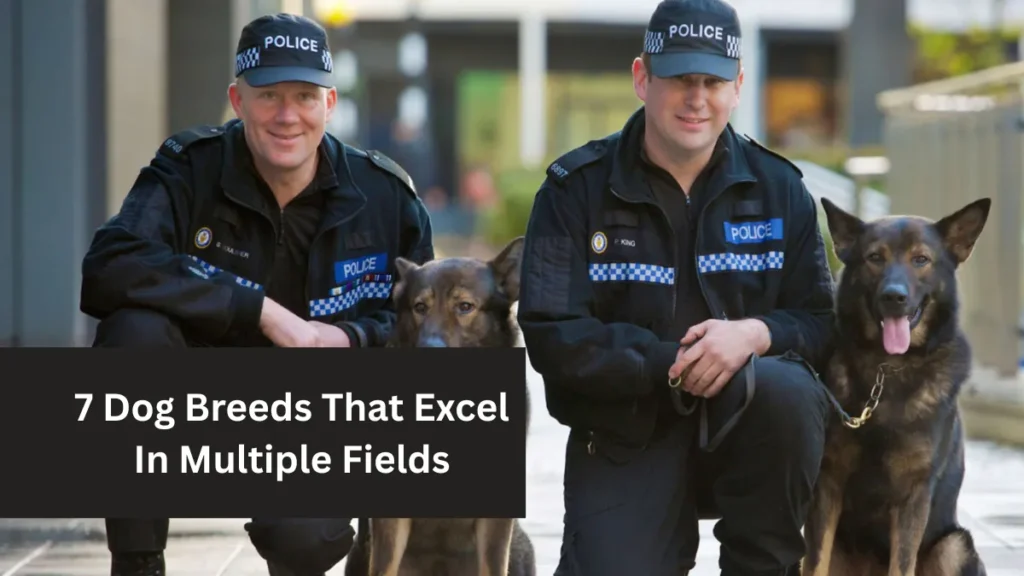Choosing the right dog breed is especially important for seniors seeking companionship, comfort, and easy care. While dogs can bring joy and reduce loneliness, not every breed fits well with an older adult’s lifestyle. Some dogs need lots of exercise, grooming, or firm training—demands that may be overwhelming for many seniors.
This article highlights the 8 dog breeds that tend to be the most challenging for seniors to manage. These breeds often require high energy, complex training, or special care that can be difficult for older adults to provide. If you’re retired or helping a senior find a furry friend, knowing which breeds to avoid can save time, money, and stress. While these dogs may thrive in active homes, they’re often not the best choice for seniors who want a calm, low-maintenance companion.
1. Border Collie
Border Collies are incredibly intelligent and energetic dogs bred for herding livestock. Their intelligence demands a lot of daily mental and physical stimulation to keep them happy. For seniors with limited mobility or a quieter lifestyle, meeting these needs can quickly become overwhelming. Without enough exercise, Border Collies may develop destructive behaviors like chewing and barking. Their strong herding instincts can also lead them to nip or try to herd people and pets, which might be stressful for seniors. While loyal, their high activity requirements make them a tough match for older adults seeking peace and calm.
2. Siberian Husky
Known for their striking looks and independent nature, Siberian Huskies need a lot of exercise and mental engagement. Originally bred for pulling sleds over long distances, they thrive on activity. Seniors who can’t commit to long walks or outdoor time may find Huskies difficult to care for. These dogs are also escape artists, needing secure fencing and close supervision. Their independent streak makes training challenging, especially for first-time owners. Plus, Huskies tend to howl, which can be disruptive in quiet senior communities. Their demanding nature makes them less ideal for seniors looking for low-stress companionship.
3. Dalmatian
Dalmatians are athletic and energetic dogs that need plenty of vigorous exercise. Without enough physical and mental stimulation, they can become bored, anxious, and even aggressive. Seniors who prefer calm and quiet may struggle to keep up with a Dalmatian’s needs. They are also stubborn and strong-willed, requiring consistent training—something that can be hard to manage for older adults. Additionally, their heavy shedding and predisposition to certain health problems, like deafness and urinary stones, require extra care and vet visits. These factors make Dalmatians less suited for seniors.
4. Jack Russell Terrier
Though small, Jack Russell Terriers are extremely energetic and one of the most active breeds. Originally bred for fox hunting, they have a strong prey drive and require frequent exercise and mental stimulation. Without it, they can become destructive, barking excessively or chewing furniture. Their stubborn and independent nature can make training difficult, which may add stress for seniors. While loving, their high energy and constant barking make them less suitable for those seeking a quiet, relaxed companion.
5. Belgian Malinois
The Belgian Malinois is a powerful, intelligent breed often used in police and military roles. They thrive on discipline, structure, and high physical and mental activity. Seniors who are less active will likely find this breed overwhelming. Belgian Malinois require experienced handlers to manage their strong protective instincts and energy. Without proper training and socialization, they can be wary of strangers and show aggression. Their strength and intensity make them a poor fit for most seniors who want a calm and manageable pet.
6. Akita
Akitas are large, strong, and independent dogs that need confident and experienced owners. They are loyal and protective but can become overly territorial or aggressive if not handled properly. Their suspicion of strangers and other animals can make them challenging in shared living environments. Akitas require firm training and plenty of exercise, which may be difficult for many seniors. Their size and strength can be risky to manage for frail individuals. For these reasons, Akitas are generally not recommended for older adults.
7. Australian Cattle Dog
Also called Blue Heelers or Queensland Heelers, Australian Cattle Dogs are energetic and intelligent herders bred for long days of work. They need high levels of activity and mental challenges to stay happy. Seniors with limited mobility or those wanting a relaxed lifestyle may find this breed’s energy and independent streak too much to handle. Their herding instinct can lead them to nip at heels or chase moving objects, which could be unsafe. These dogs need consistent discipline and guidance, making them better suited to active, experienced owners.
8. Weimaraner
Weimaraners are large, athletic dogs bred for hunting, known for their energy and need for constant companionship. They require at least one to two hours of exercise daily, which can be too demanding for many seniors. Left alone, they may develop separation anxiety and destructive behaviors. Their size and strength also make them hard to control, especially on walks. While affectionate and loyal, Weimaraners’ restlessness and strong-willed nature make them a poor fit for calm, low-energy households.
Final Thoughts
While every dog has a unique personality, some breeds demand too much energy, training, or care for most seniors. It’s crucial to find a dog whose needs match your lifestyle, mobility, and time availability. The breeds above, while lovable, typically require more attention and activity than many older adults can provide. Choosing the right dog breed will lead to a happier life for both you and your furry friend. Always research thoroughly and consider your living situation before welcoming a dog into your home—the perfect companion is waiting for you, just not among these eight breeds.
FAQs
Why are certain dog breeds not ideal for seniors?
Some breeds have high energy levels, require intense training, or are too large and strong—making them difficult for seniors to manage safely and comfortably.
Are large dogs always a bad choice for older adults?
Not always. Some large breeds are gentle and low-energy. However, breeds that are both large and highly active or aggressive can be a poor fit for seniors.
Can seniors still own active dog breeds with the right support?
Yes, but it depends on the individual’s health, mobility, and whether they have help from family, dog walkers, or trainers. Otherwise, calmer breeds are a better match.
What qualities should seniors look for in a dog breed?
Seniors should look for breeds that are calm, low-maintenance, easy to train, and good with companionship—especially if they live alone or in smaller homes or apartments.


